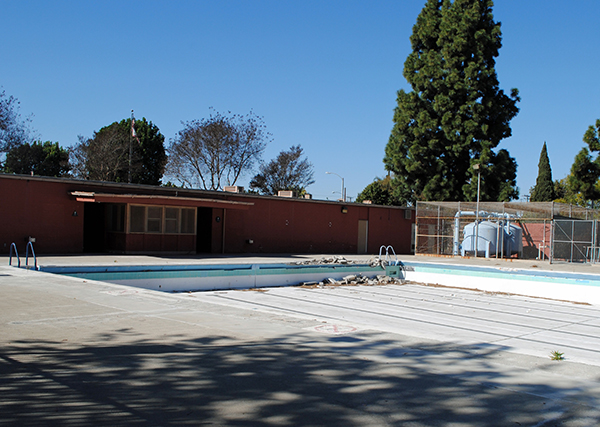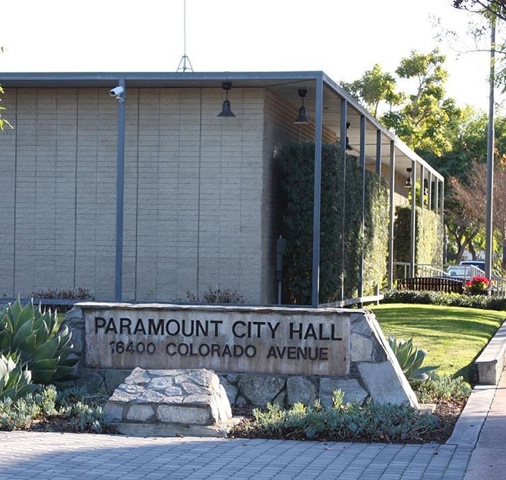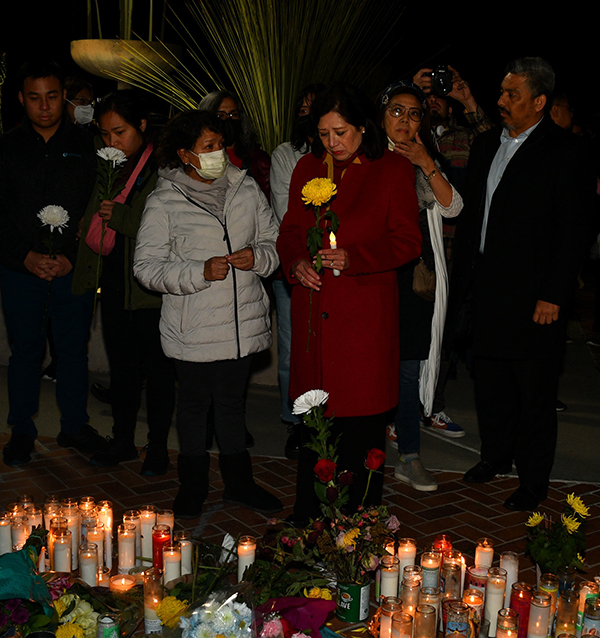By Alfredo Santana
Contributing Writer
BELL GARDENS — Demolition of the aging swimming pool at the John Anson Ford Park may start soon if the City Council selects a bidder for the job this month.
Recreations and Community Services Director Elizabeth Nava said at a recent City Council meeting that a letter with a notice to proceed from the National Park Services arrived the afternoon of Aug. 19, authorizing work to begin demolishing the old pool starting Sept. 1.
“We are very excited about this update. This is a significant one, a significant step forward. I know we all have been waiting for this,” Nava said.
She added that so far about $9.5 million has been secured for the $22 million project, and that additional financial sources are being explored, including a request to County Supervisor Janice Hahn for $4 million.
Nava provided a bi-monthly report to the council on the protracted job and confirmed the federal Land and Water Conservation Fund issued a $6 million grant last September, and the office of Assemblywoman Cristina Garcia allocated $2 million more.
A caveat to disburse the grant requires that the city signs an agreement with the state’s Land and Water Conservation Fund, and be approved by the City Council.
The remaining $1.5 million would arrive from a congressional appropriation negotiated by U.S. Rep. Lucille Roybal-Allard, pending passage of a transportation, housing and urban development bill for the current fiscal year.
Also the architectural and engineering drawings for the project from the RJM Design Group have been submitted and reviewed by the county’s parks and recreation department.
However, the renderings would be resubmitted for a second and final check before construction work begins, Nava said.
Bell Gardens paid a little more than $1 million to RJM Design Group for the project’s blueprints, budgeted $1.1 million to demolish the old pool, and projects to spend a total of $3.6 million on the engineering, including construction management, materials, testing and inspection for the construction of the new pool.
The aquatic center’s design includes a new 50-meter swimming pool with eight lanes, a therapy pool for people with disabilities, a recreational pool with water slides for youth, modern locker rooms with ventilation, a fitness center and a grass seating area with a terrace.
Building the aquatics center would cost about $18 million, a figure that does not include the rising costs of labor and materials due to 8.5% inflation recorded in July.
Initially, the city expected to receive approval for the pool’s deconstruction at the start of the summer, and hire a company in April to tear down the facility, but the process moved at a snail’s pace due to the federal procedures involved to qualify for the grant.
To make up for the lost activities during the hot summer, the recreation and community services department partnered with the city of Montebello and offered a program with classes for swimmers at the Chet Holifield Park Pool.
More than 170 youth, adults and senior residents enrolled in $40 and $45 swim lessons from July to August, and the city arranged free transportation for students without cars to the pool located at 1060 S. Greenwood Ave.
Lessons will continue through October with the addition of water aerobic and recreational swimming classes.
According to Bell Gardens City Councilwoman Lisseth Flores, the city has worked diligently for three years hiring the architects and engineers to design the multi-pool center. City officials also met with a congressional delegation to request the $1.5 million.
Flores thanked Roybal-Allard for her commitment to support a project children and residents will enjoy, and floated an idea to name the aquatic center after the local representative, who is retiring from Congress at the end of this year.
Nava said that U.S. Sen. Alex Padilla decided to remove a $1.5 million request from a funding bill, and that a request for funds from state Sen. Lena Gonzalez fell through.
If not enough allocations are committed, Bell Gardens plans to borrow money at low-interest rates from the U.S. Housing and Urban Development Department, the federal agency that administers Section 108 Community Development Building Block loans for cash-strapped cities to invest in local infrastructure, and apply for a bank loan.
City Councilman Marco Barcena said the city needs to inform residents about the funding sources for the aquatic center.
“We had the pandemic, and have to comply with all kind of federal and state requirements to make sure that the money is clear,” Barcena said. “Now we have $9.5 million, which is almost half of the entire cost that’s been secured for our pool.”
He told City Manager Michael O’Kelly to devise a social media campaign to inform residents about the project’s funding sources, and put to rest false stories circulating throughout the community.
“The kind of oversight that’s required and the nitpickiness to make sure that everything is done properly has been the case and continues to be the case as we move forward with the project,” O’Kelly said. “The [funding sources] want to make sure their investment comes to fruition in a successful project. We are confident that we’ll be able to make that happen.”
The aquatic center was shut down in 2017 due to insufficient safety protocols, unhealthy conditions and for lack of access for people with disabilities.
On a related item, Public Works Director Grissel Chavez said there are no plans to remove the large trees popular with park visitors to make room for the expanded aquatic center. She said only a few eucalyptus near the playground near the restrooms would be removed.
Chavez said that 79 new trees will be planted to replace 31 trees that will be cut down, and as part of the landscaping design around the three projected pools.
“I’m a tree lover myself,” Chavez said. “I hate to see trees removed. But we are making sure we can plant trees and landscaping wherever we can to make up for the trees that will be removed.”




